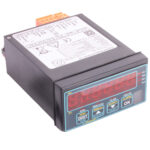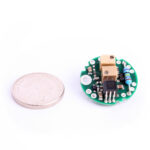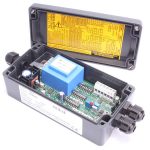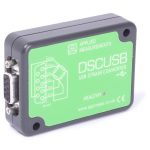At a Glance
- Capacities: 0-10N up to 0-500N
- Output: 2mV/V
- Environmental Protection: IP50
- Accuracy: <±0.05%/RC
- Compact Size
- Miniature Size – Ideal for Low-Range Monitoring
- Superior Accuracy Guaranteed
- Ideal for general industrial use
- Wide Range of Instrumentation
Description
The DBCR compact S-beam load cell is suitable for use in both tension and compression and lends itself to a multitude of low-range monitoring, control, test and measurement applications including material testing machines and small suspended hoppers.
The DBCR is a compact version of the classic S-beam load cell design manufactured from aluminium and available with measuring capacities from 0-10N up to 0-500N. It offers a very high accuracy of better than 0.05% of rated capacity.
The DBCR compact S-beam load cell can be supplied calibrated with any of our range of strain gauge input instrumentation to provide a complete, ready to use measurement system.
For other sizes and capacities please view our full range of S-Beam load cells.
Technical Specifications
| Rated Capacity (RC) | N | 0-10, 0-20, 0-50, 0-100, 0-250, 0-500 |
|---|---|---|
| Operating Modes | Tension/Compression / Tension & Compression | |
| Sensitivity (RO) | mV/V | 2.0 ±0.1% |
| Zero Balance/Offset | ±%/Rated Output | <1.0 |
| Output Symmetry (tension vs. compression) | ±%/Rated Output | <0.20 |
| Non-Linearity | ±%/Rated Output (BFSL) | <0.05 |
| Hysteresis | %/Rated Output | <0.03 |
| Repeatability | ±%/Rated Output | <0.03 |
| Temperature Effect on Zero | ±%/Rated Output/ ˚C | <0.005 |
| Temperature Effect on Sensitivity | ±%/Applied Load/ ˚C | <0.005 |
| Input Resistance | Ohms | 375 nominal |
| Output Resistance | Ohms | 350 nominal |
| Insulation Resistance | Megohms | >5000 @ 50Vdc |
| Excitation Voltage | Volts AC or DC | 10 recommended (2-15 acceptable) |
| Operating Temperature Range | ˚C | -20 to +80 |
| Compensated Temperature Range | ˚C | 0 to +70 |
| Storage Temperature Range | ˚C | -20 to +80 |
| Safe Overload | % of Rated Capacity | 150 |
| Ultimate Overload | % of Rated Capacity | 200 |
| Fundamental Resonant Frequency* | Hz | 5N=58, 10N=82; 20N=136; 50N=130; 100N=210; 250N=420; 500N=700 |
| IP Rating (Environmental Protection) | IP50 | |
| Weight (excluding cable) | grams | 85 |
| Fatigue Life | Consult Sales | |
| Cable Length (as standard) | 2 Metres | |
| Cable Type | 4-core screened, PVC sheath, Ø3.5 | |
| Construction | Aluminium Alloy | |
| Resolution: | 1 part in 250,000 (with appropriate instrumentation) | |
| *The resonant frequency is calculated with the body of the load cell attached to a large plate, ensuring that only the sensing element oscillates: This is vital to achieve the highest natural frequency and subsequent frequency response. | ||
Product Dimensions

All dimensions are in mm.
Wiring Details
| Wire | Designation |
|---|---|
| Red | +ve excitation |
| Blue | -ve excitation |
| Green | +ve signal (compression) |
| Yellow | -ve signal |
| Screen | To ground - not connected to load cell body |
Ordering Codes & Options
| Core Product | Capacity (inc Engineering Units) | Cable Length (m) | Specials Code | Example Result |
|---|---|---|---|---|
| DBCR | 10N | 002 | 000 | DBCR-10N-002-000 |
| DBCR | 20N | 002 | 000 | DBCR-20N-002-000 |
| DBCR | 50N | 002 | 000 | DBCR-50N-002-000 |
| DBCR | 100N | 002 | 000 | DBCR-100N-002-000 |
| DBCR | 250N | 002 | 000 | DBCR-250N-002-000 |
| DBCR | 500N | 002 | 000 | DBCR-500N-002-000 |
How To Install An S-Beam Load Cell
Our Applied Measurements experts have put together a 5-step guide to demonstrate how to correctly install an S-beam load cell.
Step 1 – Keep the Forces Centrally Aligned
To reduce any off-axis loading, forces must be centrally aligned through the centre of the load cell. We can supply optional load buttons and rod ends which work to reduce any side loading.
Step 2 – Do Not Overtighten the Rod Ends and Load Buttons
When using rod ends and load buttons be sure not to overtighten them when attaching them to the S-beam load cell. As this can cause damage to the load cell.
Step 3 – Always Leave a Gap
Ensure that the rod ends and load buttons do not touch the central beam. If a gap is not maintained, the central beam will not be able to move freely when tension or compressive force is applied.
Step 4 – Mount on a Flat Surface
Always secure the S-beam load cell to a clean, flat surface of better than 0.005mm surface flatness.
Step 5 – Contact with Active Area Only
When installing the S-beam load cell ensure the load is applied to the active end area only.
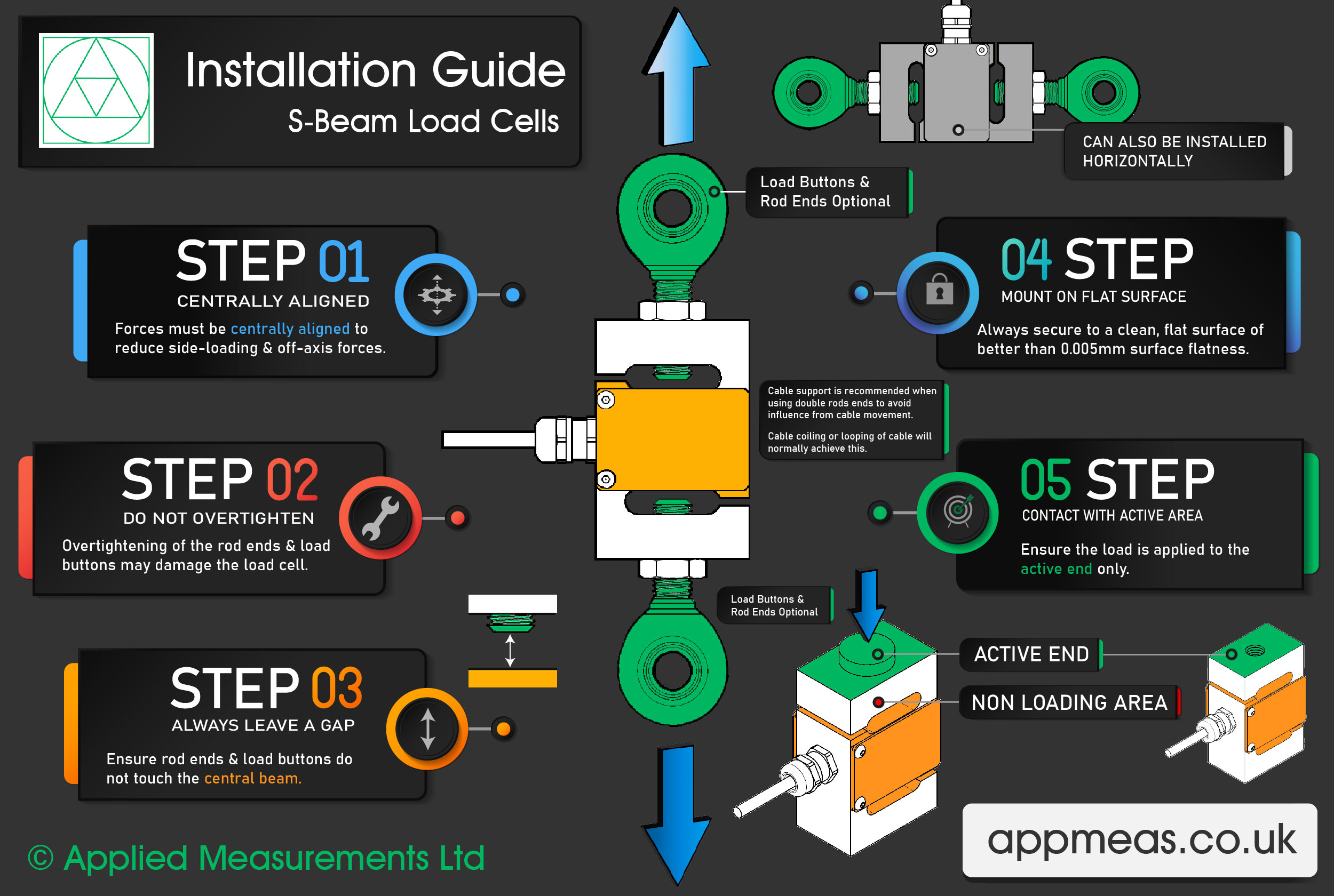
Mounting And Installation Accessories
Load Buttons and Rod End Bearings
Designed to align forces through the principal axis of the load cell thus reducing the effects of extraneous forces, hence offering improved performance from the cell.
Load buttons are used where compressive forces are applied.
Rod End Bearings are used where tensile forces are being applied.
Load Buttons for Compressive Use
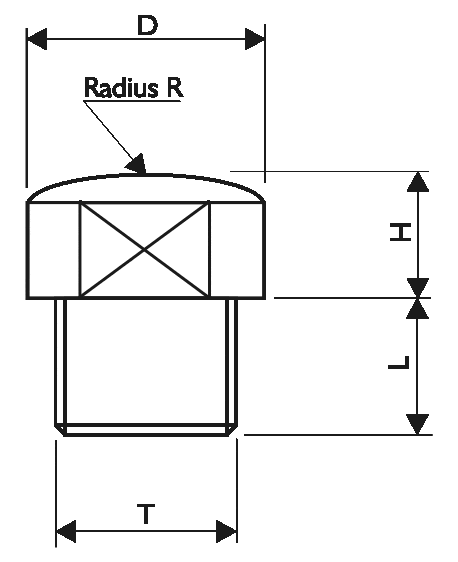
| THREAD T | M6 x 1 |
|---|---|
| D | 12.5 |
| H | 6 |
| L | 9 |
| R | 200 |
Rod End Bearings for Tension Use
Maintenance-free rod ends are a complete units made up of a housing with both an integral shank (with an internal or external thread) and a maintenance-free spherical plain bearing, located within the housing.
Key Features:
- Supports radial loads in a tensile or compressive direction.
- Suitable for unilateral loads – can support alternating loads and alternating loads in combination with bearing GE..UK-2RS, please consult sales.
- Zinc plated for corrosion resistance.
- Are maintenance-free.
- Fitted with radial spherical plain bearings GE..UK
- Hard chromium/PTFE composite sliding contact surfaces.
- Enables compact adjacent construction thanks to its thin walled design of the eye housing.
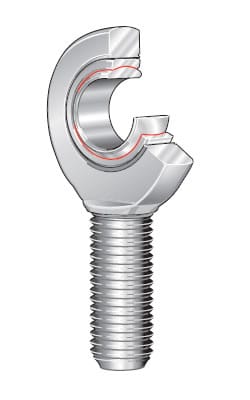
GAR..UK
(right hand thread)
- To ISO 12 240-4, dimension series E, type M
- Shank with external thread
Maintenance-free
ISO 12 240-4, dimension series E, type M
Sliding contact surface: hard chromium/PTFE
Series GAR..UK
Sliding material: PTFE composite
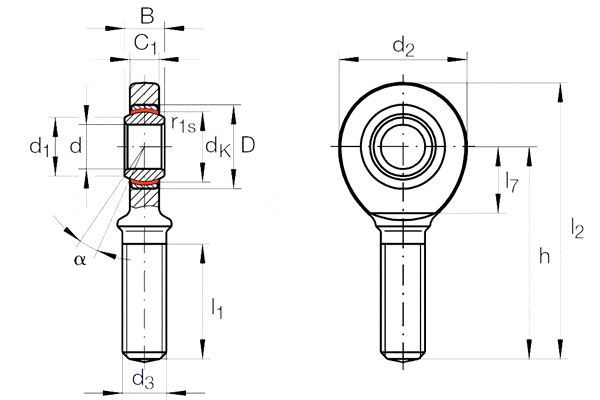
| LOAD CELL | SHAFT DIAMETER | ORDERING CODE | MASS | DIMENSIONS | |||||||
|---|---|---|---|---|---|---|---|---|---|---|---|
| d | WITHOUT SEALS | WITH SEALS | ≈ kg | d | D | B | dK | d1 | d2 | d3 | |
| DBCR | 6 | GAR 6 UK | - | 0.017 | 6-0.008 | 14 | 6-0.12 | 10 | 8 | 21 | M6 |
| LOAD CELL | Degrees | Chamfer Dimension | Basic Load Ratings | Radial Internal Clearance | Shaft Diameter | ||||||
|---|---|---|---|---|---|---|---|---|---|---|---|
| h | C1 | α | l1 | l2 | l7 | r1s min. | dyn. Cr N | stat. C0r N | d | ||
| DBCR | 36 | 4.4 | 13 | 18 | 46.5 | 12 | 0.3 | 3 600 | 6 920 | 0 - 0.032 | 6 |


